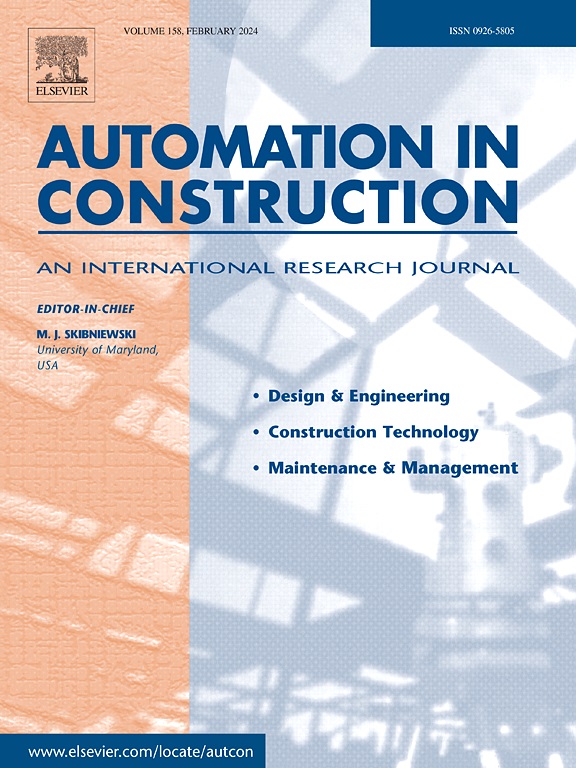Dynamic robotic bricklaying force-position control considering mortar dynamics for enhanced consistency
IF 9.6
1区 工程技术
Q1 CONSTRUCTION & BUILDING TECHNOLOGY
引用次数: 0
Abstract
With growing construction automation needs and aging workforce, robotic bricklaying technologies offer promising solutions by replacing labor-intensive manual wall construction. Despite advances in mechatronics, trajectory generation, and adhesive bonding, bricklaying process consistency still remains a major issue, challenged by nonlinear mortar dynamics, variable thickness, and lack of force-position control. This paper enhances consistency by adjusting the robot trajectory to achieve the desirable maximum contact force and brick placement accuracy. The feedforward bricklaying trajectory is generated by solving an optimal control problem with unspecified terminal time to approach the desirable maximum force while maintaining placement accuracy, considering the identified mortar dynamics. To ensure precise positioning and robust desired maximum contact force, robotic bricklaying force-position feedback control is proposed to dynamically control the velocity utilizing real-time force feedback. Simulations and experiments validated the proposed approach, including shear tests, demonstrating enhanced consistency and the relationship between maximum contact force and bond strength.
考虑砂浆动力学的动态机器人砌砖力位置控制提高一致性
随着建筑自动化需求的增长和劳动力的老龄化,机器人砌砖技术通过取代劳动密集型的人工砌墙提供了有前途的解决方案。尽管在机电一体化、轨迹生成和胶粘剂粘合方面取得了进步,但砌砖过程的一致性仍然是一个主要问题,这受到了砂浆非线性动力学、厚度变化和缺乏力-位置控制的挑战。本文通过调整机器人轨迹来提高一致性,以达到理想的最大接触力和贴砖精度。考虑已识别的砂浆动力学,通过求解终端时间不确定的最优控制问题,在保持放置精度的情况下逼近所需的最大力,生成前馈砌砖轨迹。为了保证机器人的精确定位和鲁棒性要求的最大接触力,提出了机器人砌砖力-位置反馈控制方法,利用实时力反馈动态控制机器人砌砖速度。模拟和实验验证了所提出的方法,包括剪切测试,证明了增强的一致性以及最大接触力与粘结强度之间的关系。
本文章由计算机程序翻译,如有差异,请以英文原文为准。
求助全文
约1分钟内获得全文
求助全文
来源期刊

Automation in Construction
工程技术-工程:土木
CiteScore
19.20
自引率
16.50%
发文量
563
审稿时长
8.5 months
期刊介绍:
Automation in Construction is an international journal that focuses on publishing original research papers related to the use of Information Technologies in various aspects of the construction industry. The journal covers topics such as design, engineering, construction technologies, and the maintenance and management of constructed facilities.
The scope of Automation in Construction is extensive and covers all stages of the construction life cycle. This includes initial planning and design, construction of the facility, operation and maintenance, as well as the eventual dismantling and recycling of buildings and engineering structures.
 求助内容:
求助内容: 应助结果提醒方式:
应助结果提醒方式:


